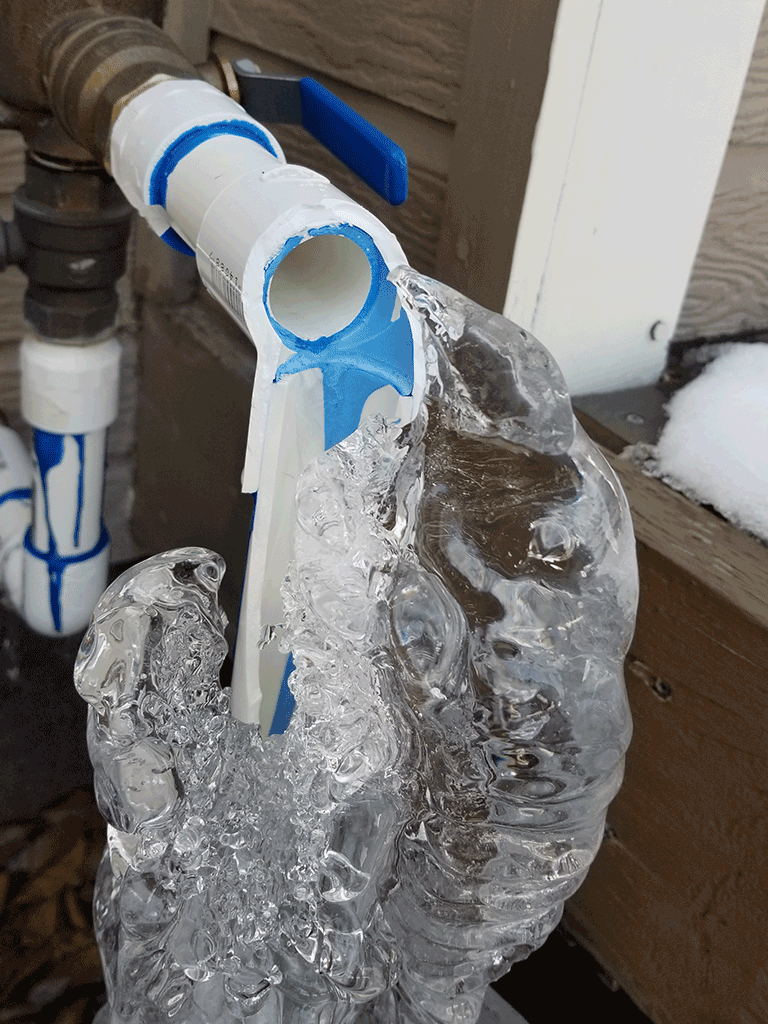What are your opinions about Prevent Frozen Pipes ?

Winter can damage your plumbing, especially by freezing pipelines. Here's how to stop it from happening and what to do if it does.
Introduction
As temperature levels drop, the risk of icy pipelines boosts, potentially bring about costly repair work and water damages. Comprehending exactly how to avoid icy pipes is critical for home owners in cool environments.
Avoidance Tips
Protecting at risk pipelines
Wrap pipes in insulation sleeves or use heat tape to secure them from freezing temperatures. Concentrate on pipelines in unheated or outside locations of the home.
Heating strategies
Keep interior rooms appropriately warmed, especially locations with plumbing. Open closet doors to permit warm air to distribute around pipes under sinks.
Exactly how to determine frozen pipelines
Seek decreased water circulation from taps, unusual odors or sounds from pipelines, and noticeable frost on subjected pipes.
Long-Term Solutions
Architectural modifications
Think about rerouting pipes away from outside walls or unheated locations. Add extra insulation to attic rooms, basements, and crawl spaces.
Updating insulation
Purchase top quality insulation for pipelines, attics, and walls. Proper insulation aids keep consistent temperature levels and decreases the risk of frozen pipelines.
Safeguarding Outside Pipes
Garden pipes and exterior faucets
Detach and drain pipes yard hoses before wintertime. Mount frost-proof faucets or cover outdoor faucets with insulated caps.
Comprehending Frozen Pipelines
What causes pipes to freeze?
Pipes freeze when exposed to temperatures below 32 ° F (0 ° C) for extended periods. As water inside the pipes ices up, it increases, taxing the pipeline walls and potentially causing them to break.
Threats and damages
Icy pipes can result in supply of water disruptions, home damages, and pricey repair work. Ruptured pipes can flood homes and create substantial structural damages.
Indicators of Frozen Pipes
Determining icy pipelines early can avoid them from rupturing.
What to Do If Your Pipes Freeze
Immediate activities to take
If you believe frozen pipelines, maintain faucets available to soothe pressure as the ice thaws. Use a hairdryer or towels soaked in warm water to thaw pipelines slowly.
Verdict
Stopping icy pipelines needs aggressive actions and quick reactions. By comprehending the causes, indicators, and preventive measures, homeowners can secure their pipes during cold weather.
6 Proven Ways to Prevent Frozen Pipes and Protect Your Home
Disconnect and Drain Garden Hoses
Before winter arrives, start by disconnecting your garden hoses and draining any remaining water. Close the shut-off valves that supply outdoor hose bibs and leave the outdoor faucet open to allow any residual water to drain. For extra protection, consider using faucet covers throughout the colder months. It’s also important to drain water from any sprinkler supply lines following the manufacturer’s directions.
Insulate Exposed Pipes
Insulating your pipes is an effective way to prevent freezing. Pipe insulation is readily available at home improvement stores and is relatively inexpensive. Pay close attention to pipes in unheated areas such as the attic, basement, crawl spaces, or garage. Apply foam insulation generously to create a buffer against the cold. You can also wrap your pipes in heat tape or thermostat-controlled heat cables for added warmth.
Seal Air Leaks
Inspect your home for any cracks or openings that could let in cold air. Seal any holes around the piping in interior or exterior walls, as well as the sill plates where your home rests on its foundation. Additionally, make sure to keep your garage door closed unless you’re entering or exiting. Leaving it open creates a significant air leak that can lead to frozen pipes.
Allow Warm Air Circulation
During cold snaps, it’s essential to allow warm air to circulate evenly throughout your home. Leave interior doors ajar to promote better airflow. Open kitchen and bathroom cabinets to help distribute heat consistently around the rooms. If you have small children or pets, be sure to remove any household chemicals or potentially harmful cleaners from open cabinets for safety.
Let Faucets Drip
A small trickle of water can make a big difference in preventing ice formation inside your pipes. When temperatures drop significantly, start a drip of water from all faucets served by exposed pipes. This continuous flow helps prevent the water from freezing. Additionally, running a few faucets slightly can relieve pressure inside the pipes, reducing the chances of a rupture if the water inside does freeze.
https://choateshvac.com/6-proven-ways-to-prevent-frozen-pipes-and-protect-your-home/
:strip_icc()/snow-outdoor-faucet-pipes-4af65d1e5e904fb1aa7bf74071fe5d89.jpg)
As a passionate reader about 6 Ways to Prevent Frozen Pipes, I think sharing that chunk was mandatory. Appreciated our piece? Please quickly share it. Let others locate it. Thanks a lot for being here. Kindly come visit our site back soon.
Go Services